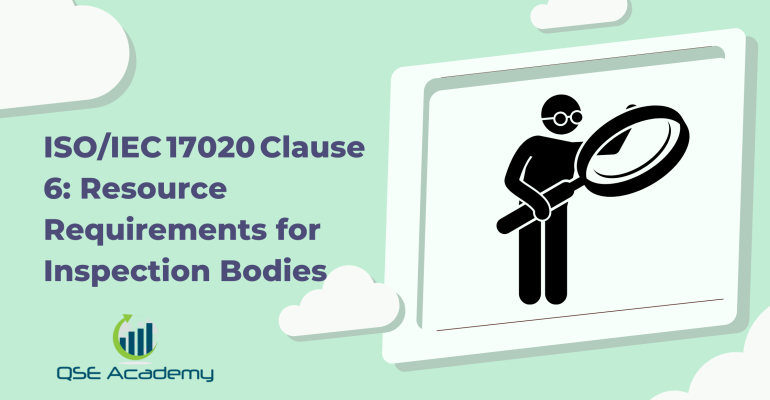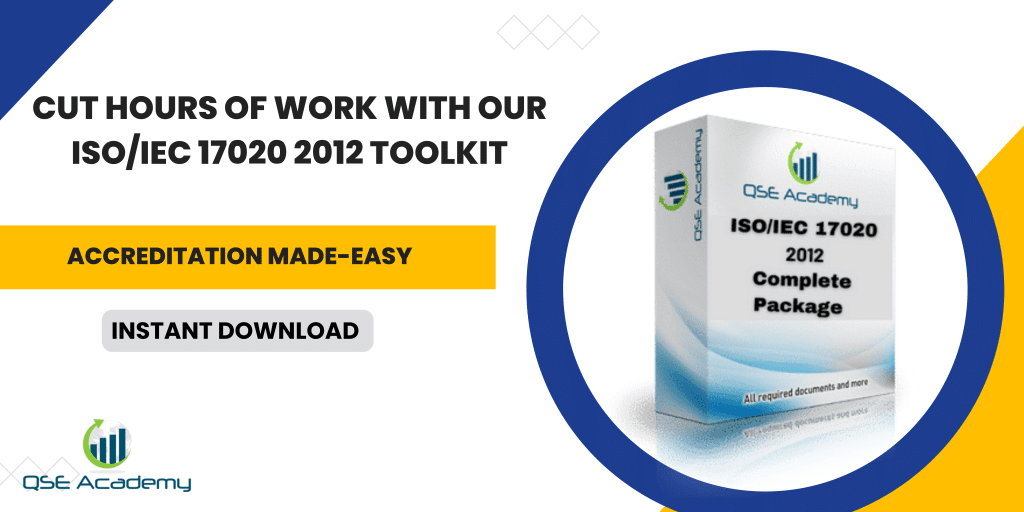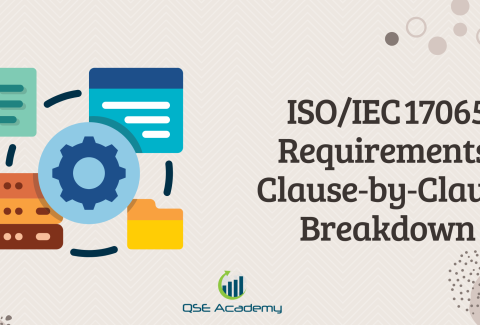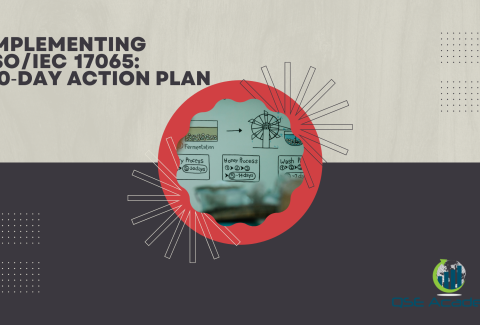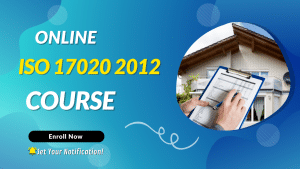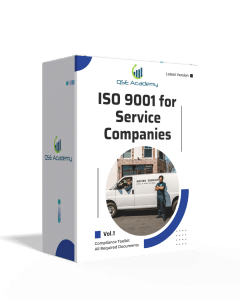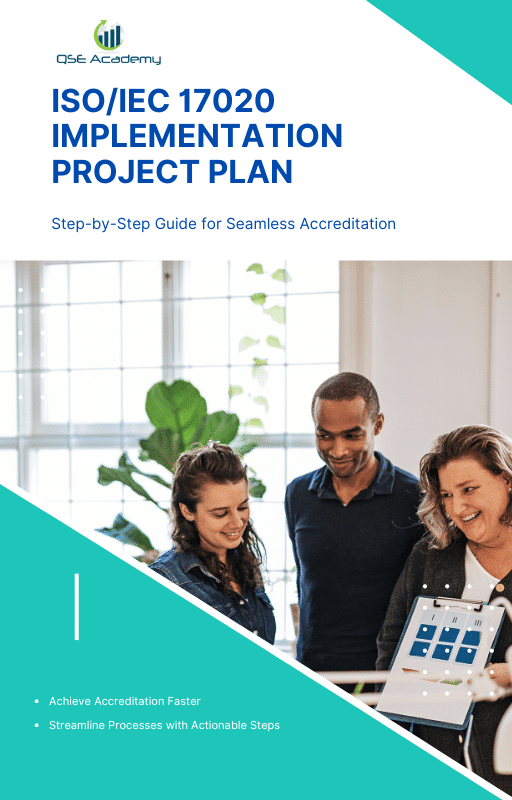ISO/IEC 17020 Clause 6: Resource Requirements for Inspection Bodies
Last Updated on October 22, 2025 by Hafsa J.
Why Resources Define Reliability in ISO/IEC 17020
Every inspection body wants to be seen as reliable. But reliability doesn’t come from promises—it comes from having the right people, equipment, and facilities to back up your work. That’s exactly what Clause 6 of ISO/IEC 17020 is about.
Here’s what I’ve noticed after years of guiding inspection bodies toward accreditation: most nonconformities under Clause 6 aren’t about technical skill—they’re about missing proof. A company knows its inspectors are competent or its tools are calibrated, but it can’t show it.
Clause 6 changes that. It demands evidence that your people are qualified, your equipment is maintained, and your facilities support valid, impartial inspections. It’s about control, not paperwork.
By the end of this article, you’ll know how to:
-
Demonstrate competence clearly and confidently.
-
Maintain and track calibration records.
-
Manage your facilities and external providers effectively.
If Clause 5 defines who runs your system, Clause 6 defines what keeps it running smoothly.
What Clause 6 Really Means – The Link Between Resources and Confidence
Clause 6 might sound straightforward—“have the necessary resources to perform inspections”—but it’s one of the most critical sections in ISO/IEC 17020. Why? Because every inspection result depends on the quality of your people, tools, and environment.
Here’s the big idea: resources build credibility. When auditors see that your inspectors are competent, your equipment is traceably calibrated, and your inspection areas are controlled, they immediately trust your results.
In my experience, organizations often misunderstand what “resources” really mean. It’s not just staff or instruments. It’s everything that influences inspection validity—from lighting and temperature to subcontracted laboratories and software systems.
Pro Tip: Start your compliance journey with a simple exercise. List all inspection activities, then identify what each one needs to be done correctly—personnel, equipment, environment, and records. That list becomes your “resource map,” and it’s your first line of defense in an audit.
Common pitfall? Over-focusing on qualifications and forgetting environmental conditions. Auditors look for balance—your competence, your calibration, and your conditions all have equal weight.
Now that you know how Clause 6 connects resources to reliability, let’s focus on the most important one—your people.
Competence of Personnel – The Core of Clause 6
If there’s one resource that defines the credibility of your inspection body, it’s your people. Clause 6 makes it clear: inspections can only be trusted when they’re performed by competent personnel—individuals with the right knowledge, training, and judgment to make accurate decisions.
In my experience, this is where most inspection bodies either shine or stumble. Many teams have skilled inspectors, but their competence isn’t formally demonstrated. During audits, that’s a red flag. Auditors don’t just want to hear that your inspectors are experienced—they want to see how you verified it.
Here’s how to prove competence under ISO/IEC 17020:
-
Define qualification criteria. Outline the education, training, or experience required for each inspection role.
-
Keep competence records. Training certificates, evaluations, and observation reports should be up to date and organized.
-
Perform periodic evaluations. Supervisors should regularly assess inspectors’ technical performance and impartiality.
-
Maintain a competence matrix. This shows who’s authorized to perform which types of inspections—auditors love this visual clarity.
Pro Tip: Link every inspector’s qualifications directly to your inspection scope. If someone performs welding inspections, for example, make sure their record references both technical training and relevant standards.
Common mistake? Assuming long service equals competence. Experience helps, but without documented verification, it’s not compliant.
Once you’re confident your team’s competence is solid and well-documented, the next step is ensuring their tools are equally reliable.
Equipment and Calibration – Keeping Tools Trustworthy
Even the most skilled inspector can’t deliver reliable results if their tools aren’t trustworthy. That’s why Clause 6 emphasizes proper control, maintenance, and calibration of all inspection equipment.
Here’s what I’ve seen time and again: inspection bodies have good equipment, but poor documentation. Tools get used daily, yet no one can show when they were last calibrated—or worse, calibration records are scattered across emails and spreadsheets. When an auditor spots that, they question every result linked to those instruments.
To stay compliant and confident:
-
Maintain a master equipment list. Include serial numbers, calibration due dates, certificate numbers, and responsible persons.
-
Ensure calibration traceability. Certificates must trace back to national or international standards.
-
Use only verified tools. If equipment fails calibration, clearly label and remove it until corrected.
-
Document checks and maintenance. Daily verification logs or function checks show consistent control between calibrations.
Pro Tip: Never rely solely on calibration labs. Always verify certificates—check that uncertainty values, reference standards, and traceability details are present.
A common pitfall? Using client-provided or third-party tools without confirming their calibration status. If it’s used under your name, you’re responsible for its validity.
Your equipment is only as good as your control system. Once that’s stable, your next focus should be where inspections take place—because even the environment can affect your results.
Facilities and Environmental Conditions
Your inspection environment can make or break the validity of your results. Clause 6.3 reminds inspection bodies that it’s not enough to have competent people and calibrated tools—you also need facilities that support consistent, accurate, and safe inspections.
Here’s what that means in real life: temperature, humidity, lighting, cleanliness, noise, and even ventilation can influence how inspections are performed and interpreted. I’ve seen labs and field teams overlook this completely, only for auditors to ask, “How do you ensure environmental conditions don’t affect your results?” and silence follows.
Here’s how to avoid that moment:
-
Identify environmental factors that matter. For example, lighting levels for visual inspections or temperature control for mechanical measurements.
-
Monitor and record conditions. Keep logs for temperature, humidity, or other critical factors when applicable.
-
Set acceptance criteria. Define what’s “within limits” for your inspections and what happens when conditions drift outside them.
-
Include field inspections. Clause 6 doesn’t apply only to fixed sites—portable equipment and on-site assessments must also be controlled.
Pro Tip: Conduct periodic facility assessments. Walk through your inspection areas quarterly, document observations, and take photos when needed. It’s simple evidence that your environment remains suitable for accurate work.
Common mistake? Ignoring temporary or mobile sites. Whether it’s a factory floor, dock, or construction zone—auditors expect to see the same controls applied everywhere.
Once your people, tools, and environment are under control, it’s time to look outward—to those external labs or contractors that support your operations.
External Providers and Support Services
Even if your inspection body performs most activities internally, chances are you still rely on others—calibration labs, testing partners, software providers, or subcontracted inspectors. Clause 6 expects you to control these external resources just as tightly as your own.
Here’s what I’ve noticed: many inspection bodies assume that if a supplier is ISO accredited, they’re automatically compliant. Not true. Accreditation helps, but you are still responsible for verifying that the service meets your specific needs and scope.
Here’s how to stay on top of external providers:
-
Evaluate before approval. Check competence, accreditation status, turnaround time, and impartiality.
-
Document agreements. Formalize roles, confidentiality, and quality expectations in contracts or SLAs.
-
Monitor performance. Track turnaround, errors, and client feedback. Poor performance or expired certificates are risks you must manage.
-
Keep evaluation records. Auditors will want to see how you justified your choices and what actions you took if performance slipped.
Pro Tip: Maintain a Supplier Evaluation Log. Include date of evaluation, reviewer, approval status, and evidence (like calibration certificates or accreditations). It’s an easy win during audits.
Common pitfall? Forgetting to re-evaluate suppliers annually. Auditors often ask, “When was the last review?”—and outdated records instantly trigger a finding.
Once your external resources are under control, the final step is to make sure all your internal resources—people, tools, and facilities—are continuously monitored and improved over time.
Records, Monitoring, and Continual Improvement
Clause 6 doesn’t stop at having competent people, calibrated tools, and controlled facilities—it expects you to prove those controls work over time. That’s where monitoring and continual improvement come in.
In my experience, this is where well-organized inspection bodies separate themselves from the rest. They don’t just react to problems—they track performance, spot trends, and improve before an auditor even raises an eyebrow.
Here’s how to make that happen:
-
Keep detailed resource records. Training, calibration, and maintenance logs should always be current and easy to retrieve.
-
Monitor key indicators. Track overdue calibrations, expired training, or facility issues using dashboards or spreadsheets.
-
Include resource performance in internal audits. Don’t limit audits to procedures—verify records, talk to inspectors, and confirm control in real operations.
-
Feed everything into management review. Clause 6 links directly to Clause 8—management must see how resources are performing and what needs improvement.
Pro Tip: Use a simple trend report. For example, show how many calibration or training tasks were delayed each quarter. It proves awareness and action—two things auditors always look for.
Common mistake? Treating resource monitoring as an afterthought. When training and calibration records live in separate folders with no clear owner, findings multiply fast.
When you build a rhythm of checking and improving your resources, Clause 6 becomes easy to maintain—and your inspections become consistently credible.
Next, let’s answer a few common questions that always come up when organizations work on Clause 6 compliance.
FAQs – Resource Requirements in ISO/IEC 17020
Q1. What exactly does ISO/IEC 17020 mean by “resources”?
Resources cover everything that supports valid inspections—qualified personnel, suitable facilities, calibrated equipment, and approved external services. If it influences inspection quality or impartiality, it’s a resource that needs control and documentation.
Q2. Do inspectors need formal degrees to be considered competent?
Not always. ISO/IEC 17020 values competence, not credentials. You can demonstrate competence through training, practical experience, and regular evaluations. What matters is that you can show inspectors are capable of performing their assigned tasks correctly and consistently.
Q3. How often should we calibrate our equipment?
It depends on usage, manufacturer recommendations, and the criticality of the measurement. The key is justification—document how you decided the calibration frequency and keep traceable records. Auditors want to see logic, not guesswork.
Q4. Can we outsource all calibrations and still meet Clause 6?
Yes, as long as the external calibration provider is competent and traceable to national or international standards. You’re still responsible for verifying their performance and keeping valid certificates.
Pro Tip: During audits, keep one binder or digital folder labeled “Resource Evidence.” Store training records, calibration certificates, and supplier evaluations there. Quick access leaves a strong impression on auditors.
Now that we’ve cleared up those questions, let’s wrap up with the key message—how managing resources properly doesn’t just fulfill Clause 6, but strengthens your entire inspection body.
Turning Resources Into Reliability
Clause 6 isn’t just about ticking boxes—it’s about building trust. Every inspection body’s credibility depends on one thing: having the right people, tools, and conditions to deliver consistent, accurate results. When those elements are managed well, clients see reliability, and auditors see control.
Over the years, I’ve seen inspection bodies struggle with Clause 6 at first. But once they start treating resources as the foundation of their operations—not as paperwork—they gain stability fast. Training becomes proactive, calibrations stay on schedule, and audits turn into smooth, predictable checkups.
Here’s the key takeaway: your resources reflect your professionalism. Competent inspectors, calibrated instruments, and controlled environments tell accreditation bodies that you don’t just comply—you care about the integrity of your inspections.
Pro Tip: Before your next audit, do a quick self-check:
-
Are all calibration and training records up to date?
-
Are environmental logs maintained and reviewed?
-
Are external providers still approved and monitored?
If you can answer “yes” to those, you’re already showing the spirit of Clause 6—control, consistency, and credibility.
If you’d like to strengthen your system further, download QSE Academy’s ISO/IEC 17020 Resource & Competence Matrix Template or schedule a short consultation. It’s the easiest way to align your team, tools, and processes before your next accreditation audit.
I hold a Master’s degree in Quality Management, and I’ve built my career specializing in the ISO/IEC 17000 series standards, including ISO/IEC 17025, ISO 15189, ISO/IEC 17020, and ISO/IEC 17065. My background includes hands-on experience in accreditation preparation, documentation development, and internal auditing for laboratories and certification bodies. I’ve worked closely with teams in testing, calibration, inspection, and medical laboratories, helping them achieve and maintain compliance with international accreditation requirements. I’ve also received professional training in internal audits for ISO/IEC 17025 and ISO 15189, with practical involvement in managing nonconformities, improving quality systems, and aligning operations with standard requirements. At QSE Academy, I contribute technical content that turns complex accreditation standards into practical, step-by-step guidance for labs and assessors around the world. I’m passionate about supporting quality-driven organizations and making the path to accreditation clear, structured, and achievable.

